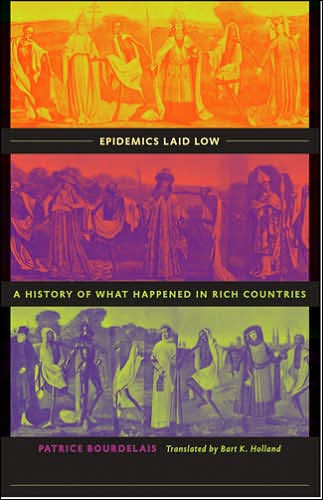This captivating account describes how populations respond to crises of disease and how authorities deal with the devastation afterward. Bourdelais discusses the successes of northern European countries in fighting and controlling infectious diseases and emphasizes, by comparison, the failures of the countries in the south. He links success to several factors: ideology of progress, economic development, popular demands to improve public health, and investment in medical research. Bourdelais studies the social consequences of these policies, the changes in the representation of epidemics, the behaviors of populations, and heightened tensions between advocates of individual freedom and those of collective interest.
Epidemics continue to threaten us today. What do our responses to these threats say about our priorities? Will the security of public health remain a privilege of a few powerful countries or will poorer countries benefit from the efforts of the rich to prevent the spread of disease inside their own borders?
This captivating account describes how populations respond to crises of disease and how authorities deal with the devastation afterward. Bourdelais discusses the successes of northern European countries in fighting and controlling infectious diseases and emphasizes, by comparison, the failures of the countries in the south. He links success to several factors: ideology of progress, economic development, popular demands to improve public health, and investment in medical research. Bourdelais studies the social consequences of these policies, the changes in the representation of epidemics, the behaviors of populations, and heightened tensions between advocates of individual freedom and those of collective interest.
Epidemics continue to threaten us today. What do our responses to these threats say about our priorities? Will the security of public health remain a privilege of a few powerful countries or will poorer countries benefit from the efforts of the rich to prevent the spread of disease inside their own borders?

Epidemics Laid Low: A History of What Happened in Rich Countries
192
Epidemics Laid Low: A History of What Happened in Rich Countries
192
Product Details
| ISBN-13: | 9780801882944 |
|---|---|
| Publisher: | Johns Hopkins University Press |
| Publication date: | 04/25/2006 |
| Pages: | 192 |
| Product dimensions: | 5.50(w) x 8.50(h) x 0.81(d) |
| Age Range: | 18 Years |
